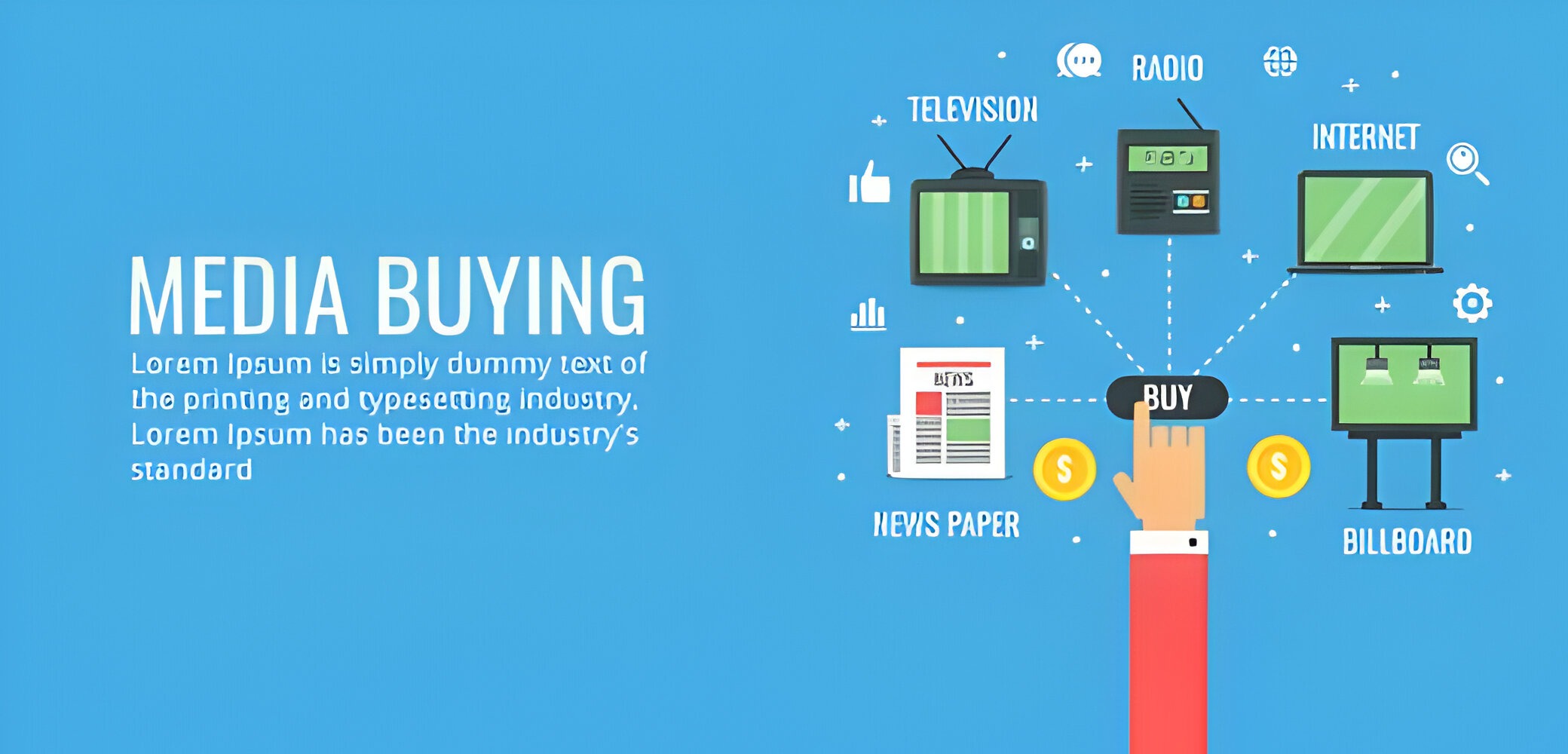Media Buying Techniques: The Ultimate Guide to
Understanding Media Buying Techniques
Media buying techniques are essential for businesses looking to make the most of their advertising budget. It involves the strategic planning, negotiation, and buying of media space to reach the target audience effectively. By understanding media buying techniques, businesses can optimize their campaigns to maximize reach and impact.
This involves analyzing data, identifying key factors such as audience demographics and behavior, and developing effective media planning strategies. It also includes the negotiation and buying process, where businesses secure the best deals and placements for their ads. By measuring campaign performance and adapting to emerging trends, businesses can stay ahead in the ever-evolving media landscape.

Media Buying Techniques Overview
Media buying techniques refer to the strategic approach and process of purchasing media space to effectively reach a target audience and achieve campaign goals. It involves analyzing data and identifying key factors such as audience demographics and behavior to inform media planning strategies. Media buying techniques also include negotiation and the selection of media placements at the best possible rates.
By understanding the target audience and optimizing the media mix and budget allocation, businesses can maximize the reach and impact of their advertising campaigns. This comprehensive approach ensures that businesses make the most of their advertising budget and achieve successful campaign outcomes.

Key Factors to Consider in Media Buying
When it comes to media buying, several key factors need to be considered for a successful campaign. Firstly, understanding the target audience and their demographics is crucial in selecting the right media channels to reach them effectively. Analyzing consumer behaviour and segmentation strategies helps in tailoring the message and positioning the campaign for maximum impact.
Additionally, effective media planning involves optimizing the media mix and budget allocation to ensure that the campaign reaches the desired audience at the right time and frequency. Finally, negotiation skills and executing the buying process efficiently can help in securing the best possible rates and placements. By considering these factors, businesses can maximize the success of their media buying efforts.

Target Audience Analysis
Target audience analysis is a crucial step in media buying as it helps businesses understand their consumers better. By identifying the target audience, businesses can tailor their media buying strategies to reach them effectively. This analysis involves gathering factual data on demographics, interests, behaviors, and preferences of the target audience. It helps in segmenting the audience based on various criteria and creating personalized messages that resonate with them.
By understanding their target audience, businesses can make informed decisions on selecting the right media channels and platforms to reach their desired consumers and achieve campaign success.

Identifying Target Audience for Media Buying
To effectively reach their intended consumers, businesses must first identify their target audience for media buying. This involves gathering factual data on the demographics, interests, behaviors, and preferences of their potential consumers. By understanding who their audience is, businesses can segment them based on various criteria and create personalized messages that resonate with them.
This process helps businesses tailor their media buying strategies to specific groups, improving the chances of successful campaign outcomes. By accurately identifying their target audience, businesses can make informed decisions on selecting the right media channels and platforms to reach their desired consumers.

Consumer Behavior and Segmentation Strategies
Understanding consumer behavior and implementing effective segmentation strategies are crucial aspects of media buying. By analyzing consumer behavior, businesses can gather valuable insights into their target audience’s preferences, motivations, and purchasing patterns. These insights help in segmenting the audience into specific groups, allowing businesses to deliver personalized messages that resonate with each segment.
Segmentation can be done based on demographics, psychographics, behavior, or other factors. By understanding consumer behavior and segmenting the audience, businesses can create targeted media campaigns that have a higher chance of success and engagement.
Media Planning Strategies
Media planning is a crucial step in the media buying process that involves determining the most effective media channels and strategies to reach the target audience. It requires a careful analysis of factors such as the target audience’s media consumption habits, interests, and preferences.
Effective media planning involves selecting the right media mix, which could include a combination of TV, radio, print, digital, and social media. It also requires optimizing the budget allocation to maximize reach and impact. By employing strategic media planning strategies, businesses can ensure that their media campaigns are optimized for success and deliver the desired results.

Effective Media Planning for Campaign Success
Effective media planning is crucial for the success of any advertising campaign. It involves considering various factors such as the target audience’s preferences, media consumption habits, and interests. By understanding the target audience, media planners can select the most relevant and effective media channels to reach them. They can also optimize the media mix by combining traditional channels like TV and print with digital and social media platforms.
Additionally, effective media planning involves allocating the budget strategically to maximize reach and impact. By employing these strategies, businesses can ensure that their media campaigns are well-targeted and resonate with their intended audience, leading to campaign success and desired results.
Optimizing Media Mix and Budget Allocation
Optimizing the media mix and budget allocation is a crucial aspect of effective media planning. It requires strategically combining different media channels to reach the target audience effectively. By analyzing the target audience’s media consumption habits and preferences, media planners can determine the most relevant channels for reaching them. This may involve a combination of traditional channels such as TV and print, along with digital platforms like social media and online advertising.
Furthermore, budget allocation plays a vital role in maximizing the reach and impact of the campaign. Allocating the budget strategically to different media channels ensures that the message reaches the target audience through multiple touchpoints. Media planners can use data and insights to determine the optimal allocation for each channel, considering factors like reach, frequency, and cost-effectiveness. This allows businesses to make the most out of their budget and achieve the desired results from their media campaigns.
Negotiation and Buying Process
Negotiation and Buying Process:
The negotiation and buying process is a critical step in media buying. It involves negotiating the terms and conditions of media placements with publishers and media vendors to secure the best possible deals. Media buyers work closely with media sellers to reach mutually beneficial agreements that align with the campaign objectives and budget. Effective negotiation skills are essential in getting competitive rates and added value from media partners. Once the negotiations are finalized, the buying process involves executing media orders, coordinating with vendors, and ensuring the timely delivery of advertisements. This phase requires careful attention to detail to ensure smooth execution and successful campaign implementation.
Negotiation Strategies in Media Buying
Negotiation strategies play a crucial role in media buying, as they can significantly impact the success and effectiveness of a campaign. When negotiating with media sellers, it is essential to gather factual data and insights about the media landscape, including audience demographics, market trends, and competitive rates. Armed with this information, media buyers can leverage their negotiation power to secure the best deals. Some effective negotiation strategies include setting clear objectives, establishing a strong rapport with media sellers, being prepared to walk away if necessary, and exploring alternative options. Smart negotiation techniques can help media buyers achieve their desired outcomes and maximize the value of their media investments.
Executing the Buying Process Efficiently
Executing the buying process efficiently is crucial for successful media buying. To streamline the process, media buyers should have a clear understanding of their objectives and target audience. They should also leverage technology and automation tools to manage the buying process effectively. Utilizing programmatic buying platforms and media buying software can help simplify and expedite the process. Additionally, maintaining strong relationships with media partners and vendors can contribute to smoother negotiations and smoother execution. By implementing these strategies, media buyers can optimize their buying process and achieve their campaign goals.
Measuring Campaign Performance
Measuring campaign performance is essential to determine the success of media buying efforts. By tracking key performance indicators (KPIs) such as reach, impressions, click-through rates, and conversions, media buyers can analyze the effectiveness of their campaigns. Utilizing analytics and tracking tools, they can gather factual data to evaluate the impact of their advertising efforts and make informed decisions for future campaigns. It is crucial to set specific goals and metrics to measure the return on investment (ROI) and gauge the overall success of the media buying strategy. By continuously monitoring campaign performance, media buyers can optimize their strategies and achieve better results.
Tracking and Analyzing Media Campaign Performance
Tracking and analyzing media campaign performance is crucial for media buyers to gain insights into the effectiveness of their campaigns. By utilizing analytics and tracking tools, they can gather factual data on key performance indicators (KPIs) such as reach, impressions, click-through rates, and conversions. This data allows media buyers to evaluate the impact of their advertising efforts and make informed decisions for future campaigns. By continuously monitoring campaign performance, media buyers can optimize their strategies and improve their results. Implementing tracking and analysis strategies ensures that media buyers can measure the success of their campaigns and make data-driven decisions for maximum impact.
Evaluating ROI and Success Metrics
Evaluating the return on investment (ROI) and success metrics is crucial for media buyers to gauge the effectiveness of their campaigns. By analyzing key performance indicators (KPIs) such as click-through rates, conversions, and cost per acquisition, media buyers can determine the impact of their campaigns on the desired outcomes. Additionally, evaluating the ROI helps identify the profitability of the campaign and whether it aligns with the set goals and objectives. Utilizing analytical tools and tracking mechanisms enables media buyers to make data-driven decisions for future campaigns, optimizing strategies and maximizing success. By continuously evaluating ROI and success metrics, media buyers can refine their approach and improve overall campaign performance.
Future Trends in Media Buying
As technology continues to evolve at a rapid pace, the future of media buying holds exciting possibilities. The emergence of programmatic advertising has already revolutionized the industry, making it more efficient and targeted. In the coming years, we can expect to see advancements in data analytics and artificial intelligence, allowing media buyers to analyze vast amounts of data and make data-driven decisions in real-time. Additionally, the rise of connected devices and streaming platforms will create new opportunities for targeted advertising. Media buyers will need to stay up-to-date with these trends and adapt their strategies to ensure they reach their target audience effectively. The future of media buying is full of possibilities and promises to deliver even greater results for advertisers.
Emerging Technologies and Trends in Media Buying
As the media landscape continues to evolve, emerging technologies are shaping the future of media buying. Artificial intelligence (AI) and machine learning algorithms are enabling media buyers to analyze vast amounts of data and make data-driven decisions in real-time. Programmatic advertising, which automates the buying and selling of ad inventory, is becoming more advanced and efficient. Additionally, the rise of connected devices and streaming platforms is opening up new avenues for targeted advertising. Media buyers must stay updated on these trends and adapt their strategies accordingly to ensure they reach their target audience effectively. The future of media buying holds exciting possibilities for advertisers looking to maximize their campaign success.
Adapting to Changes in the Media Landscape
In an ever-evolving media landscape, adapting to changes is crucial for the success of media buying strategies. Media buyers must stay up to date with the latest technologies and trends to remain competitive. This includes embracing emerging technologies such as AI, machine learning, and programmatic advertising. They must also be aware of shifts in consumer behavior and preferences, as well as the rise of new platforms and channels. By staying agile and proactive, media buyers can seize opportunities and effectively reach their target audience in the ever-changing media landscape.


